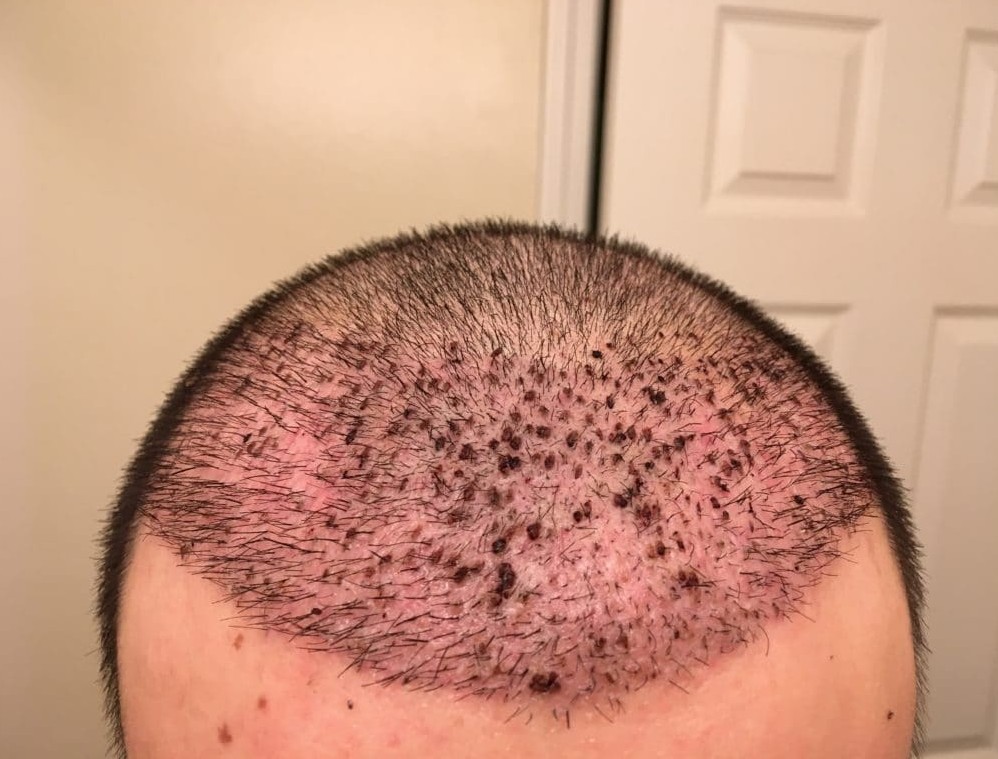A hair transplant is a transformative step toward regaining your confidence and achieving a fuller head of hair. However, the journey doesn’t end after the procedure. One of the most common—and often uncomfortable—side effects during the recovery phase is itching and redness on the scalp.
While these symptoms are usually harmless and part of the body’s natural healing process, they can cause anxiety if you’re unsure of what’s normal and what’s not. In this detailed guide, we’ll cover the causes of itching and redness after a hair transplant, how long they typically last, and the best ways to relieve discomfort without compromising results.
Why Does Itching and Redness Occur After a Hair Transplant?
After a hair transplant, your scalp goes through several stages of healing. Itching and redness are both common indicators that your body is responding appropriately to the minor trauma caused by the surgery.
- Itching: A Sign of Healing
Itching typically begins 3 to 5 days post-transplant and can last for up to two weeks.
It is usually caused by the formation of scabs, dry skin, or the regeneration of nerve endings.
Sometimes, the itching is felt not only on the recipient area but also on the donor site at the back of the scalp.
- Redness: An Expected Inflammatory Response
Redness appears almost immediately after surgery and can persist for 1 to 4 weeks.
It’s a natural response to skin trauma and increased blood flow during healing.
The degree of redness can vary depending on skin type—those with fair or sensitive skin may notice it more prominently.
When Should You Be Concerned?
While some redness and itching are completely normal, there are certain signs that may indicate a problem such as an infection or allergic reaction:
Excessive swelling
Pus or discharge
Persistent or worsening redness after 3–4 weeks
Intense burning or pain
Fever or chills
If you notice any of these symptoms, contact your surgeon immediately. Early intervention is key to preventing complications that could affect graft survival or the final outcome.
Effective Ways to Manage Itching After a Hair Transplant
Relieving itching without damaging the new grafts requires gentle, surgeon-approved techniques. Here are the most effective and safest methods:
- Use a Recommended Moisturizing Spray
Most clinics provide a saline spray or moisturizing mist to keep the scalp hydrated.
Regular use helps soften scabs and reduce irritation caused by dryness.
- Wash Your Hair Gently
Begin washing your hair as directed—typically 48 to 72 hours post-surgery.
Use only mild, non-medicated shampoos as recommended by your surgeon.
Gently pat the area rather than rubbing or scratching.
- Avoid Scratching at All Costs
Scratching can dislodge grafts and cause infection.
If the itching becomes unbearable, lightly tap the area with clean fingers for temporary relief.
- Use Anti-Itch Medications (If Advised)
In severe cases, your doctor might prescribe antihistamines or recommend a topical corticosteroid lotion.
Never use over-the-counter creams without approval.
- Stay Cool and Sweat-Free
Heat and sweat can intensify itching.
Try to stay in cool, dry environments during the first two weeks of recovery.
How to Reduce Redness After a Hair Transplant
Managing redness is mostly a matter of time and patience, but there are some proactive steps you can take:
- Protect Your Scalp from the Sun
Sun exposure can increase inflammation and prolong redness.
Wear a loose, breathable hat after the first week, or use a sun umbrella if heading outdoors.
- Avoid Alcohol and Smoking
Both alcohol and nicotine slow down the healing process and can worsen redness.
It’s best to avoid them for at least two weeks post-transplant.
- Stay Hydrated and Maintain a Healthy Diet
Proper hydration and nutrients support skin repair.
Include vitamins A, C, and E, which are essential for tissue healing.
- Avoid Harsh Hair Products
Do not use hair sprays, gels, or styling products until your doctor gives you the green light.
These products can irritate the scalp and increase redness.
Long-Term Scalp Care Tips
Even after the itching and redness have subsided, caring for your scalp will help ensure optimal growth and long-term results:
Avoid aggressive scalp massages in the first month.
Use sulfate-free and paraben-free shampoos for gentle cleansing.
Consider using biotin or doctor-recommended supplements to support hair growth.
Sleep on a clean pillowcase to minimize irritation and bacterial contact.
Final Thoughts
Experiencing itching and redness after a hair transplant can be uncomfortable—but rest assured, it’s a normal and expected part of the healing process. With proper care and a little patience, these symptoms will fade, and you’ll be well on your way to seeing the full benefits of your hair restoration procedure.
The most important thing you can do is follow your surgeon’s post-op care instructions carefully, avoid self-medicating, and contact your clinic if anything feels abnormal. Remember, every small step you take in recovery helps protect your investment and ensures the best possible outcome.

Bir yanıt yazın